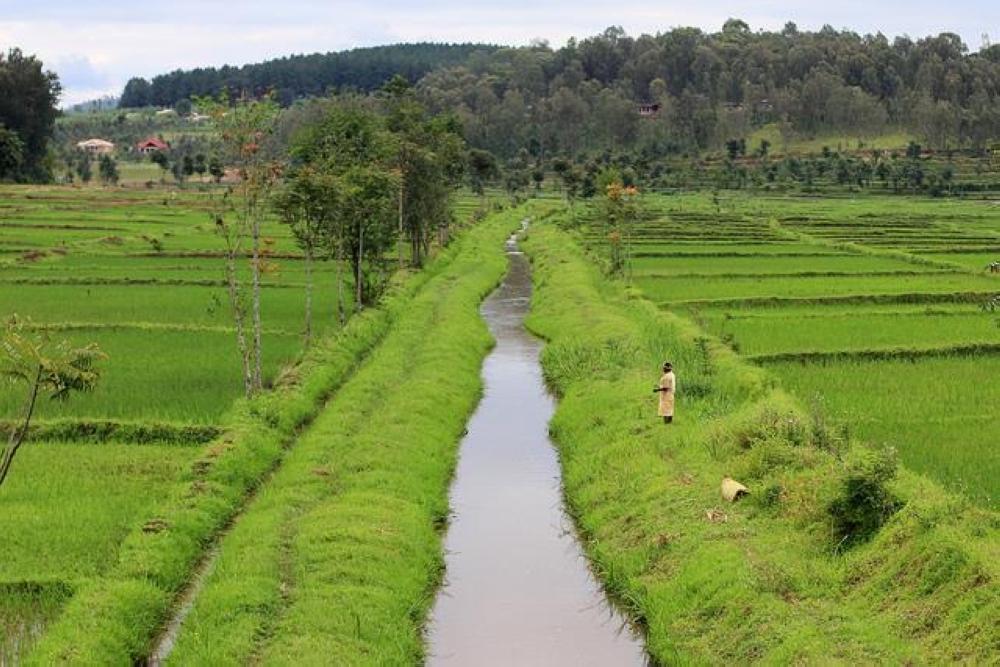Africa-Press – Rwanda. When Eugenie Niyoyita’s eight-year-old daughter, Devotha Ahishakiye, fell ill in 2021, the farmer from Kiramuruzi Sector, Gatsibo District, first assumed it was a common sickness.
“She had fever, diarrhoea, and was weak. I took her to health centres several times, but the medication wasn’t improving her condition,” she recalls.
It wasn’t until a community health worker urged her to attend a special screening campaign that she discovered her child had bilharzia.
The disease is a parasitic infection that is spread through contact with contaminated water.
Ahishakiye received medication and got better, but it left her mother with key lessons regarding hygiene.
“Now, we make sure to boil our water before drinking it to prevent such cases in the future,” she adds.
According to Rwanda Biomedical Centre (RBC), more than 1,200 bilharzia cases are reported in health facilities each year, mostly among children.
A 2020 national survey identified Bugesera District as one of the most affected areas.
The same survey found that intestinal worms remain Rwanda’s most common neglected tropical disease, with a national prevalence of 41 per cent.
Nearly half of the country’s administrative cells, 1,013 out of 2,148, were found eligible for mass deworming campaigns. Under a draft elimination plan, each cell will receive a tailored deworming schedule once or twice a year, or every two years.
Francois Havugimana, also a resident of Kiramuruzi Sector in the same district, had a similar experience with his daughter.
“She was often sick with fever and too weak to do anything, following the time she was always around the wetlands, which we later learned was a risk factor.”
After a doctor screened children in the area, his daughter tested positive for bilharzia.
Bilharzia, also known as schistosomiasis, is caused by parasitic worms and is most common in areas with stagnant or contaminated water. People working in or around wetlands are particularly vulnerable.
Ladislas Nshimiyimana, Acting Director of the NTDs and Other Parasitic Diseases Unit at Rwanda Biomedical Centre (RBC), says the disease is spread by waterborne snails that carry the parasites.
“Poor sanitation, like excreting in or near wetlands, increases the risk of spreading the disease,” he explained.
According to Nshimiyimana, RBC is distributing praziquantel tablets, the recommended drug to treat bilharzia, to residents across 1,013 cells identified as high-risk.
To reduce infections, RBC is also promoting the use of protective gear such as high boots and long gloves for people working in wetlands.
Awareness through storytelling
In high-risk areas like Gatsibo, where a 2022 study confirmed the district as one of the most affected, prevention efforts are being supported by community engagement campaigns.
One such initiative is the Storytelling Lab Initiative, which trains students, teachers, and later parents to raise awareness about bilharzia and how to prevent it.
“The goal is to equip communities with knowledge, starting with schools, so that future infections can be avoided,” Nshimiyimana said.
Yvonne Ninyembabazi, the coordinator of the Bilharzia Storytelling Lab, said one of the major challenges is that the disease remains largely unknown or neglected by many communities.
“Our initiative aims to raise awareness so that people understand the risks and take preventive measures in their daily routines, such as wearing long boots when working in wetlands,” she said.
For More News And Analysis About Rwanda Follow Africa-Press






